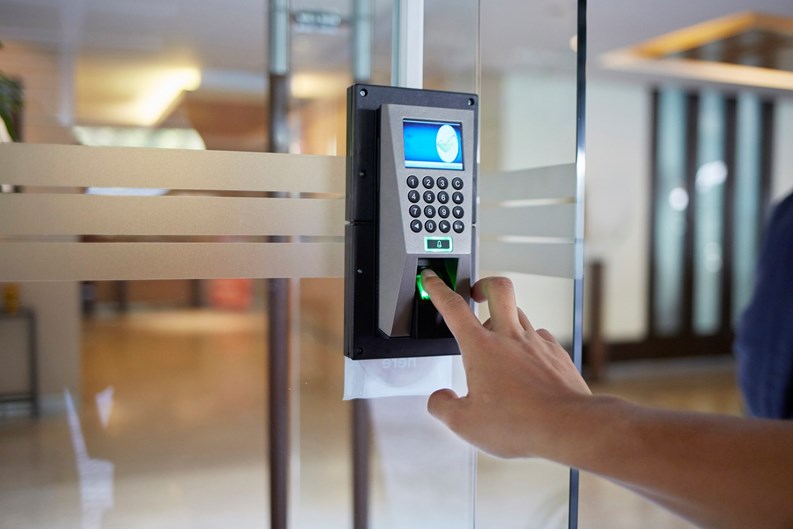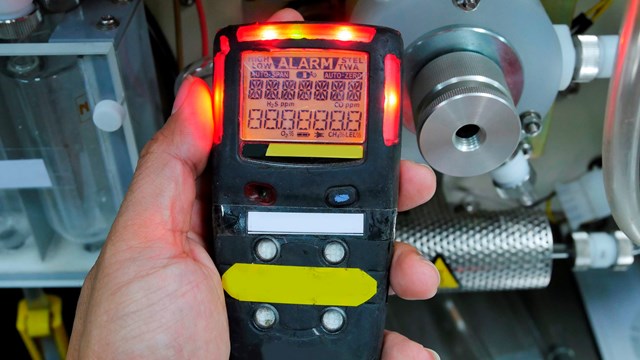Technology and communication are advancing and evolving rapidly in today’s fast-paced world. Multifamily buildings—home to residents with diverse needs, expectations, and preferences—present unique security challenges. These buildings must manage a stream of visitors, multiple entrances, and all the everyday complexities of community living, where trust and awareness among neighbors can vary widely. Boards and associations need to consider all these factors when choosing the best security solutions for their community.
Like so many aspects of multifamily management and governance, building security requires a comprehensive approach that integrates policies, technology, and people. Christopher Lanni, principal and founder of Secure Residential Services, LLC, a New England–based security consulting firm, explains, “Building security is not just one thing—there are a few key areas that must be considered: namely, policy and procedures, technology, and the human component.” This multifaceted strategy is essential for ensuring the safety and security of residents and properties alike.
A strong security strategy includes a complete set of policies and procedures to help keep everyone on the same page in managing safety efforts, access, emergency response, and residents’ expectations. Lanni emphasizes that “Without a solid policy framework, even the most advanced technology or vigilant personnel can fail to provide effective security.”
Alan Rudnick, owner of ADR Security in Manhattan adds, “Proactive measures are always better than reactive measures when it comes to building security.” By implementing proactive policies, building managers can establish protocols for regular security assessments, emergency drills, and resident education initiatives.
Technology Evolution
As technology progresses, it becomes an increasingly essential part of building security. Security technology can vary greatly, from simple systems to sophisticated access tools, surveillance cameras, and advanced AI analytics. “Technology can run the gamut,” Lanni points out, “from a lock-and-key system to an advanced key-fob system or video surveillance.”
Rudnick highlights the benefits of modern technology, particularly mobile credentials, stating, “Mobile credentials are the most secure because people are less likely to give someone their phone than to give someone their key to get into a building. Mobile credentials and video surveillance are the future of building security technology. They allow us to monitor buildings better.”
“You analyze the problem—and use a problem-solving approach to address it,” Lanni advises. “You can’t just pick one individual piece; you need to look at the big picture as a whole.” This assessment should include resident demographics, the building’s physical layout, and the budget, to name a few.
The Human Element
While technology sets the foundation for security, the human component—residents, staff, visitors, and delivery personnel—greatly impacts the success of all security measures. Involving residents in security protocols creates a sense of shared responsibility. Lanni stresses that discouraging practices like ‘tailgating’ —holding doors open for strangers attempting to enter the building—can significantly enhance building safety.
Rudnick concurs, and underscores the need for community engagement, stating that “Tailgating into buildings can be easily preventable by educating residents. Often, residents let unknown people into the building when they enter and leave.” Residents should be encouraged to actively participate in maintaining safety, making sure to secure entryways and access points throughout their building at any time of day.
David Boehm of the New York, New Jersey, and Florida firm Security USA notes, “Having community and resident meetings and explaining protocols is important so everyone is on the same page. A lack of communication can make people feel like they aren’t a part of the security plan, when in fact they are a big part of determining the process.”
Addressing Security Challenges
One of the biggest challenges in building security today is managing the daily parade of package deliveries—a modern convenience that has forced buildings to face unique security considerations. “Package deliveries can inadvertently increase the risk of unauthorized access if protocols are not followed,” Rudnick explains. Solutions may range from high-tech scanners and notification systems to staff-managed package rooms, with a specific approach depending on the building’s resources and needs. Lanni adds, “Package deliveries also increase the drain on existing resources to support the package-handling process, and give way to the potential neglect of some of the traditional security-related responsibilities.”
Delivery personnel pose additional security concerns. Boehm notes that “Delivery services pose a challenge for buildings now. You have so many different companies coming in and out of buildings—large companies like Amazon, USPS, or UPS, plus smaller independent companies—and whether they are uniformed or not makes a big difference, because you can easily identify uniformed delivery personnel and feel comfortable knowing why they are in the building.”
High Tech & the Human Component
Striking a balance between what technology can do and what requires human labor is essential. While advanced monitoring and access control solutions enhance safety, they often lack the human touch necessary for optimal success. Boehm emphasizes, “HOAs and board members need a clear plan—do the doors lock? Are the windows secure? Otherwise, you can be found liable for not attempting to mitigate security risks.”
He also highlights the importance of clear communication among board members, managers, and association or building staff to ensure that all security measures are effectively relayed to residents. “If a complete plan has been communicated to the residents, you lessen that risk [of liability]. Not having a plan can get you into trouble,” he cautions.
Technology plays a crucial role in enhancing security, with the help of human surveillance. Video surveillance, particularly when integrated with AI analytics, has transformed building protection by enabling proactive monitoring. AI-driven systems can monitor occupancy in common areas, flag suspicious activities, and adapt to a building’s unique needs. During the pandemic, occupancy monitoring became essential, and AI-enabled surveillance helped uphold restrictions on certain activities, as well as occupancy limits in common spaces.
Lanni adds, “There is tremendous potential with video surveillance and analytics. These tools can flag problems quickly, help with counting, and alert supervisors. These are all good uses from an operational security standpoint and can be tailored to meet the specific needs of your building.”
Modern technology also allows for quick notifications to residents, improving response times and enhancing residents’ sense of security. According to Boehm, “AI is fantastic. Like all technology, it can be a very effective tool in assisting with security, but it all comes down to budget. Technology will continue advancing, but you must ensure you can maintain and update your systems.”
In addition to providing the right tools for each building, working with local law enforcement and community agencies is crucial for adequate security. “It is important to work together and communicate with police precincts to determine what type of security you may need for your building,” Boehm advises. Engaging with local authorities can provide valuable insights into crime trends and help building managers tailor their security strategies accordingly.
Lanni concludes, “Building security doesn’t have to be hard. It simply involves implementing good security measures, and when laid out properly, security should feel easy.” Regular reviews of security protocols are essential for adapting to changing needs and ensuring that residents feel safe and confident in their building’s security systems.
As cities grow and residents’ needs evolve, ensuring building security remains a significant challenge. Developing a comprehensive strategy incorporating technology, policies, and human involvement can create a secure and welcoming environment for all residents.
Kate Mattiace is the Associate Editor of CooperatorNews.










Leave a Comment